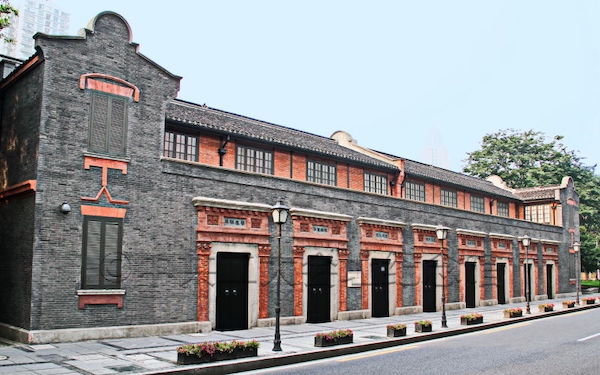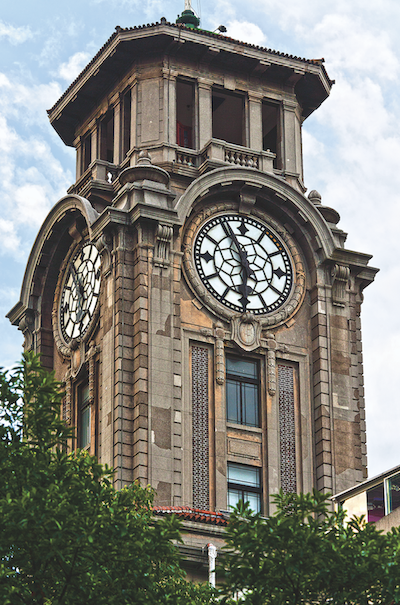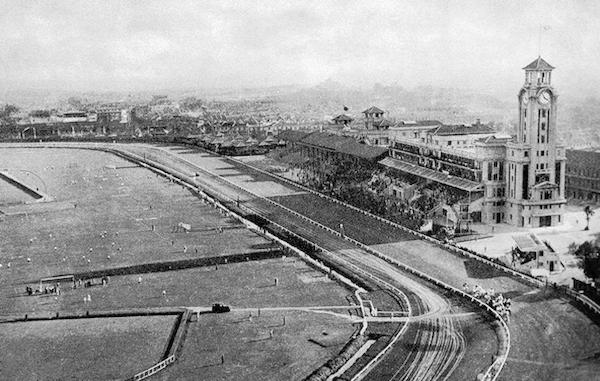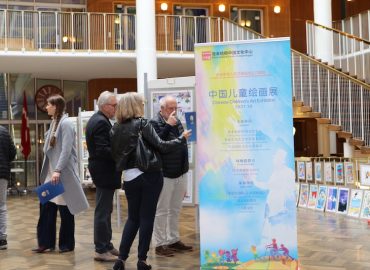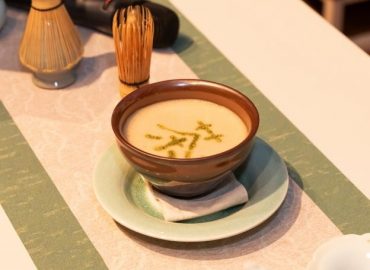The Memorial Hall at the Site of the Second National Congress of the Communist Party of China
The memorial hall at the site of the second National Congress of the Communist Party of China is located at No. 30, Lane 7, north old Chengdu Road, Jing’an District, Shanghai. From July 16 to 23, 1922, the second National Congress of the Communist Party of China was held here, where the first party constitution of the Communist Party of China was born. It was the residence of Li Da, then director of the Central Bureau. It was built in 1915.
In 2002, the memorial hall was established and officially opened. In 2003, it was named “Shanghai patriotism education base” by Shanghai Municipal People’s government.

Maoming Road – Mao Zedong’s Former Residence
Maoming Road Mao Zedong’s former residence is located at No.7, Lane 120, Maoming North Road, Jing’an District. It is a Shikumen house with patios, guest rooms, front buildings and wing rooms. In December 1977, it was designated as a cultural relic protection unit in Shanghai.
Mao Zedong came to Shanghai many times in his life and jiaxiuli was his residence for the longest time in Shanghai.
He came to Shanghai in the middle of February 1924. In June of the same year, his wife Yang Kaihui and her mother brought their children, An Ying and An Qing, to Shanghai, where the whole family lived. At that time, the front wing room on the first floor was the bedroom and study room of Mao Zedong and Yang Kaihui, the back wing room was the room of Yang Kaihui’s mother, and the guest room was a place for family to eat and meet guests.
In 2017, after the renovation of Mao Zedong’s old residence on Maoming Road in Shanghai, the architectural style was restored. In the venue, the detailed display of pictures, culture and materials, as well as the interactive means of sound, light, electricity and video, provided visitors with spiritual baptism of stepping into the eventful years, inheriting the red gene, firming their ideals and beliefs, and sharing a bright future.
Shanghai History Museum
(325 West Nanjing Road, Huangpu District, Former Shanghai Race Club)
Shanghai History Museum occupies Shanghai Race Club. The Shanghai Race Club was founded in 1850. It changed location three times. In 1860, the property was sold again. The owners bought a piece of land triple its former size and constructed the third racecourse, commonly known as the Shanghai Racecourse.
The Shanghai Racecourse held horse races and lotteries every year, so some board members suggested erecting a building inside the Shanghai Racecourse for an exclusive club. In 1932, the club spent two million taels of silver in constructing a building at the north-western corner of the Shanghai Racecourse. After Shanghai was liberated in 1949, it was rebuilt into People’s Park and People’s Square. In 1952, the building of the Shanghai Race Club was used as the Shanghai Museum and Shanghai Library. The two organizations moved out in succession, and the building became the Shanghai Art Museum. Now it has been transformed into the Shanghai History Museum and the Shanghai Revolution Museum, which officially opened to the public from March 2018.
//DANISH
Mindehal for Kinas Kommunistpartis Anden Nationale Kongres
Mindehal for KKPs anden nationale kongres ligger på det gammel nordlige Chengdu vej 30, stræde 7, Jing’an-distriktet i Shanghai. Fra den 16. til den 23. juli 1922 blev KKPs anden nationale kongres afholdt her, hvor den første partiforfatning for Kinas kommunistiske parti blev født. Det var engang Li Das bopæl, daværende direktør for Central Bureauet. Det blev bygget i 1915.
I 2002 blev mindehalen etableret og officielt åbnet. I 2003 blev den navngivet “Uddannelsesbase for Patriotisme i Shanghai” af Shanghai kommunale folkeregering.
Mao Zedongs Tidligere Bopæl på Maoming vej
Mao Zedongs tidligere bopæl lå på Maoming nordvejen 7, stræde 120, Jing’an-distriktet. Det er et Shikumen-hus med gårdhave, gæsteværelser, frontbygninger og soveværelser. I december 1977 blev det udpeget til at være en kulturel beskyttelsesenhed i Shanghai.
Mao Zedong besøgte mange gange Shanghai i sit liv, og jiaxiuli var hans længste residens i Shanghai.
Han kom til Shanghai i midten af februar 1924. I juni samme år bragte hans kone Yang Kaihui og hendes mor deres børn, An Ying og An Qing, til Shanghai, hvor hele familien kunne leve sammen. På det tidspunkt var soveværelset på første etage Mao Zedong og Yang Kaihuis soveværelset samt arbejdsværelse. Værelset overfor var Yang Kaihuis mors værelse, og gæsteværelset blev brugt til at spise og tage i mod gæster.
I 2017 efter renoveringen af Mao Zedongs gamle bopæl på Maoming vej i Shanghai, blev den arkitektoniske stil restaureret. Lokalet bruger detaljerede udstillinger, der blander billeder, kultur og materialer samt de interaktive midler som lyd, lys, elektricitet og video for at give de besøgende den oplevelse af at træde ind i et begivenhedsrigt år, arve det røde gen, opstramme deres idealer og tro og dele om en lys fremtid.
Shanghai Historiske Museum
(Vest Nanjing Vej 325, Huangpu-distriktet, Tidligere Shanghai Væddeløbsklub)
Shanghai Historiske Museum indtog Shanghai Væddeløbsklub, som blev etableret i 1850. Det havde skiftet sted tre gange. I 1860 blev ejendommen solgt igen. Ejerne købte et stykke jord, der var tredoblet så stor som det tidligere og konstruerede den tredje væddeløbsbane, almindeligvis kendt som Shanghai Galopbane.
Shanghai Galopbanen afholdt hestevæddeløb og lotterier hvert år, så nogle bestyrelsesmedlemmer foreslog at opføre en bygning inde i Shanghai Galopbanen og oprette en eksklusiv klub på højt niveau. I 1932 brugte klubben to millioner taels sølv på at opføre en bygning i det nordvestlige hjørne af Shanghai Galopbanen. Efter at Shanghai blev frigjort i 1949, blev det genopbygget til Folkets Park og Folkets Plads. I 1952 blev bygningen af Shanghai Væddeløbsklub brugt som Shanghai Museum og Shanghai Bibliotek. De to organisationer flyttede ud efter hinanden, og bygningen blev i stedet til Shanghai Kunstmuseum. Nu er det blevet omdannet til Shanghai Historiske Museum og Shanghai Revolutions Museum, som officielt åbnede for offentligheden i marts 2018.

